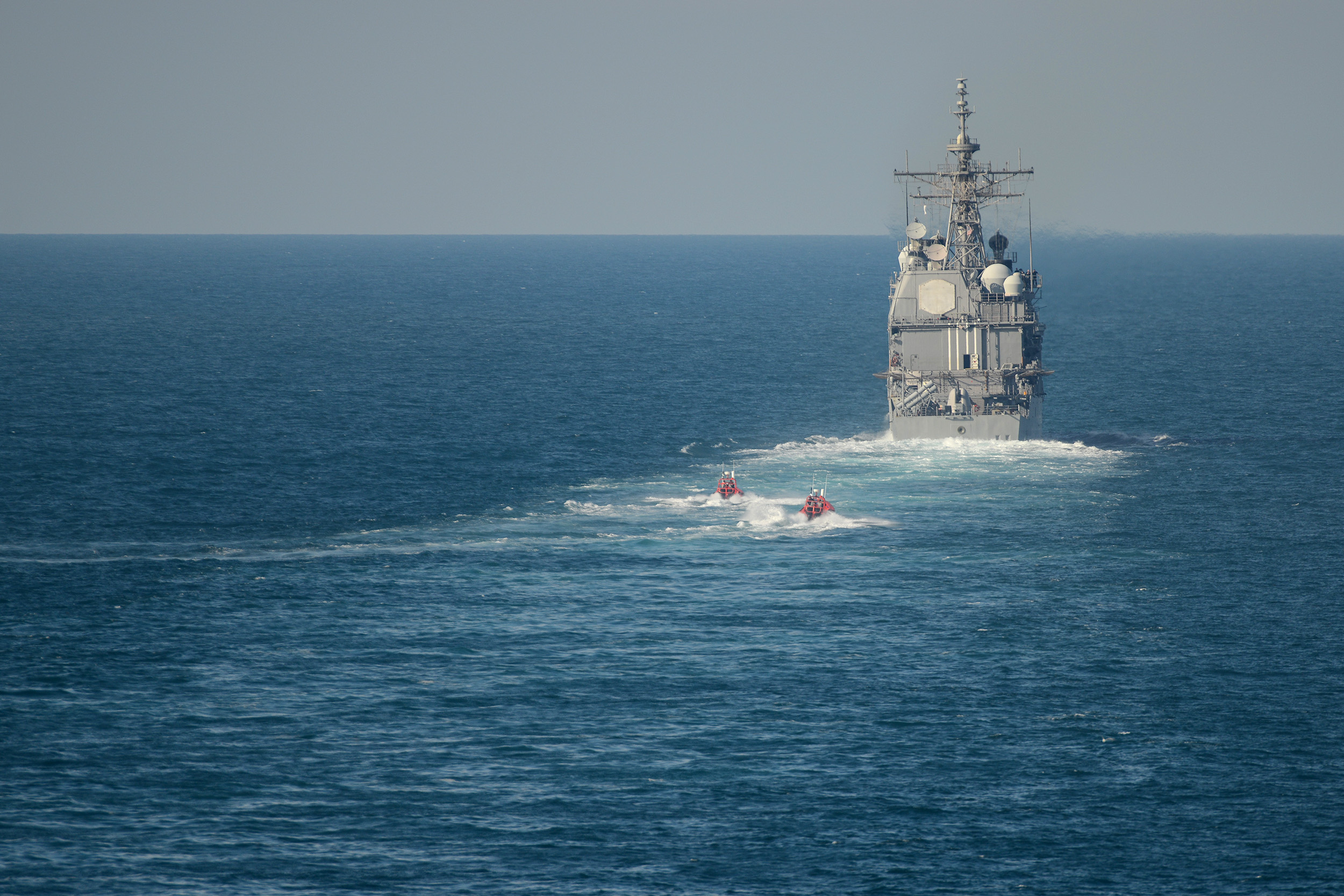
This post has been updated to correct the spelling of the name Somit Mathur.
The Office of Naval Research has awarded BAE Systems a contract for a critical component of a proposed system that would improve a surface ship’s ability to detect small surface and air threats that may not show up on its radars.
Under the $3.9-million contract announced June 14, BAE will deliver a “customized variant” of its Lock-on Naval Electro-optics/Infrared Sensor Systems (LockNESS), BAE said.
LockNESS will address one part of an ONR program called the Combined EO/IR Surveillance and Response System (CESARS), which is intended to give surface combatants enhanced capability to detect and to defend themselves against emerging threats such as low-flying anti-ship cruise missiles, armed unmanned aerial vehicles (UAVs) and swarms of small fast attack craft.
Because of their size and possible clutter from rough seas, those threats can be hard to spot on radar, and visual detection by lookouts may come too late for effective defense.
LockNESS is a technology BAE developed with its own funding that “turns existing EO/IR sensors into an automatic search and track type system,” Somit Mathur, Imaging and Aiming Solutions program manager at BAE, told USNI News on June 16.
By integrating all the separate electro-optical and infrared sensors on a warship into a 360-degree field of view, “we’re providing the operator with a common operating picture. It gives you that situational awareness and it gives you that early warning of unknown surface contacts,” Mathur said.
Instead of the sensor operator being forced to constantly look for an emerging image on a screen, LockNESS “gives you a visual cue” when a target appears. “That’s a benefit, because if you’re sitting there staring at imagery and you don’t have any visual cue, you start to get tired,” he said.
ONR was unable to provide any additional information on CESARS because a spokesman said the program “was in the black,” or classified.
But Mathur said it is “a three-year technology effort that brings a combination of new EO/IR cameras, software and also a soft kill” capability, probably using lasers.
With LockNESS, BAE is providing algorithms and tracking software that integrate with a ship’s onboard sensors to create a “360-degree visual threat picture,” allows the operators to “track multiple threats simultaneously” and provides decision-making assistance to minimize human error, BAE said in a news release.
The ONR contract requires BAE to provide one system within 33 months for operational evaluation, Mathur said. It will supply hardware and software to integrate with the onboard sensors.
LockNESS supports a part of CESARS called the Shipboard Panoramic EO/IR Cueing and Surveillance System.
There is a second part of CESARS called the Multispectral EO/IR Countermeasures for Advanced Threats.
An ONR spokesman was unable to say if a contract had been awarded on that second part of the program and if so to whom.




